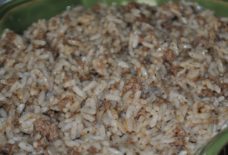Syria: Tell Bra, Archaeological City Hosted the 1st Human Civilization
Tell Brak (Nagar) is an ancient late Neolithic, Sumerian, Acadian and Middle-Late Bronze Age city on the Upper Khabur River. It is 45 km far from Hasaka city, 5,5 km from Damascus.
“In 1937-39, the British archaeologist Max Mallowan discovered Al-Ayoun Temple and King Naram Sin Palace built at a time when Tell Brak was a northern administrative center of the Acadian Empire,” Director of Hasska Antiquities Department Abdul-Masih Baghdo said.
Studying pottery fragments found at Tel Brak archaeological site helped to date it to the sixth millennium BC as the oldest inhibited city, he added.
Its importance emerged from its geographical location as a part of a major route connecting the mountains of Anatolia with the large cities of southern Mesopotamia.
Architectural ruins at the site indicated to the Uruk settlement which covered an area of 1000 hectares. It flourished during the fourth millennium as center of trade and industry and handcrafts.
Near to the northern gate, excavation works uncovered 20 archaeological layers, the most ancient of which dates back to 3800 BC. A huge building with inscribed pottery and instruments inside was also discovered.
Archaeological inscriptions discovered in Ebla mentioned that Tell Brak was an important political center in northern Syria during the third millennium BC.
Syria_Hasaka_Tell_Brak-
Incised ninevite 5 potteries with geometric and naturalistic animal motifs were also unearthed at the site.
A house with two furnitured rooms was discovered to the northwestern side of Tell Brak. Inside the house, silver instruments, lapis stones, carnelian beads, lion-headed eagle and copper rings were unearthed.
Tell Brak was the Capital of Hurrians after the end of Acadian Empire. Hurrians rebuilt King Naram Sin Palace in 2000 BC. At that time, Tell Brak was known as religious center and a home for goddess Nagar.
R. Raslan
Global Arab Network
SANA


